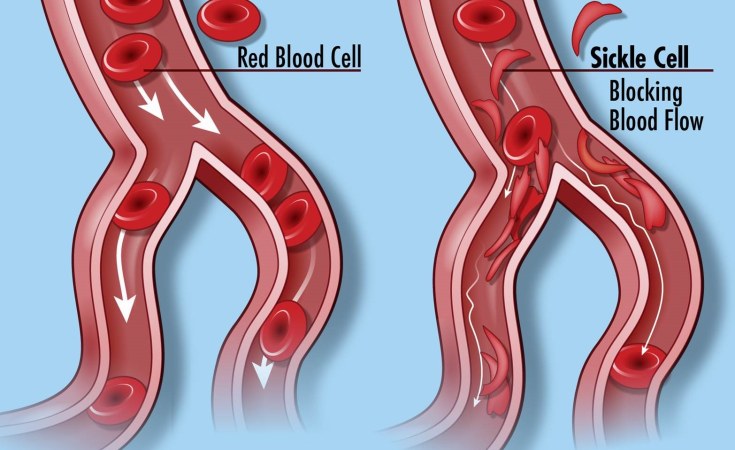Sickle cell disease is a serious genetic disorder that affects the red blood cells. People with sickle cell disease have red blood cells that are shaped like a crescent moon.
These abnormal red blood cells can block blood vessels, which can lead to pain, organ damage, and even death.
The prevalence of sickle cell trait in Uganda is 13.3%. This means that about 1 in 7 people in Uganda has sickle cell trait.
The highest prevalence of sickle cell trait is found in the Western and Central regions of the country, with some districts having a prevalence as high as 23.9%.
The prevalence of sickle cell disease in Uganda is estimated to be 0.8%. This means that about 1 in 125 people in Uganda has sickle cell disease.
It is estimated that 20,000 babies are born with sickle cell disease in Uganda each year, and approximately 15,000 of these babies die before the age of 5.
Sickle cell disease is a major cause of death in children under the age of 5 in Uganda.
The high rate of sickle cell disease in Uganda is attributed to several factors. Firstly, sickle cell disease is a genetic disorder, and the sickle cell gene is more common in people of African descent. Since Uganda has a majority-black population, it has a higher prevalence of the disease.
Secondly, sickle cell disease offers some protection against malaria, a deadly disease common in Africa. The sickle-shaped red blood cells are less likely to be infected with malaria parasites, so individuals with sickle cell trait have a slightly higher chance of surviving malaria.
Over time, this has led to an increased prevalence of the sickle cell gene in the African population.
However, there are challenges in dealing with sickle cell disease in Uganda. Lack of screening is a significant issue, as many people with the disease are unaware of their condition and unknowingly pass the gene on to their children.
Poverty is another challenge, as it hinders access to treatment for individuals with sickle cell disease, leading to complications and even death.
To address the high rate of sickle cell disease in Uganda, there are essential steps that can be taken. Increasing awareness of the disease is crucial to ensure people understand it and seek testing. Improving access to treatment is also vital to reduce complications and enhance the quality of life for individuals with the disease.
Ongoing research offers hope for the development of new treatments in the future, which would be a significant breakthrough for people with sickle cell disease in Uganda and worldwide.
The government of Uganda is actively working towards raising awareness of sickle cell disease and improving the care provided to individuals with the condition. The Ministry of Health has implemented a national sickle cell program that includes newborn screening, education, and treatment.
While sickle cell disease poses challenges, with proper care, early diagnosis, and treatment, individuals with the disease can lead long and productive lives.


